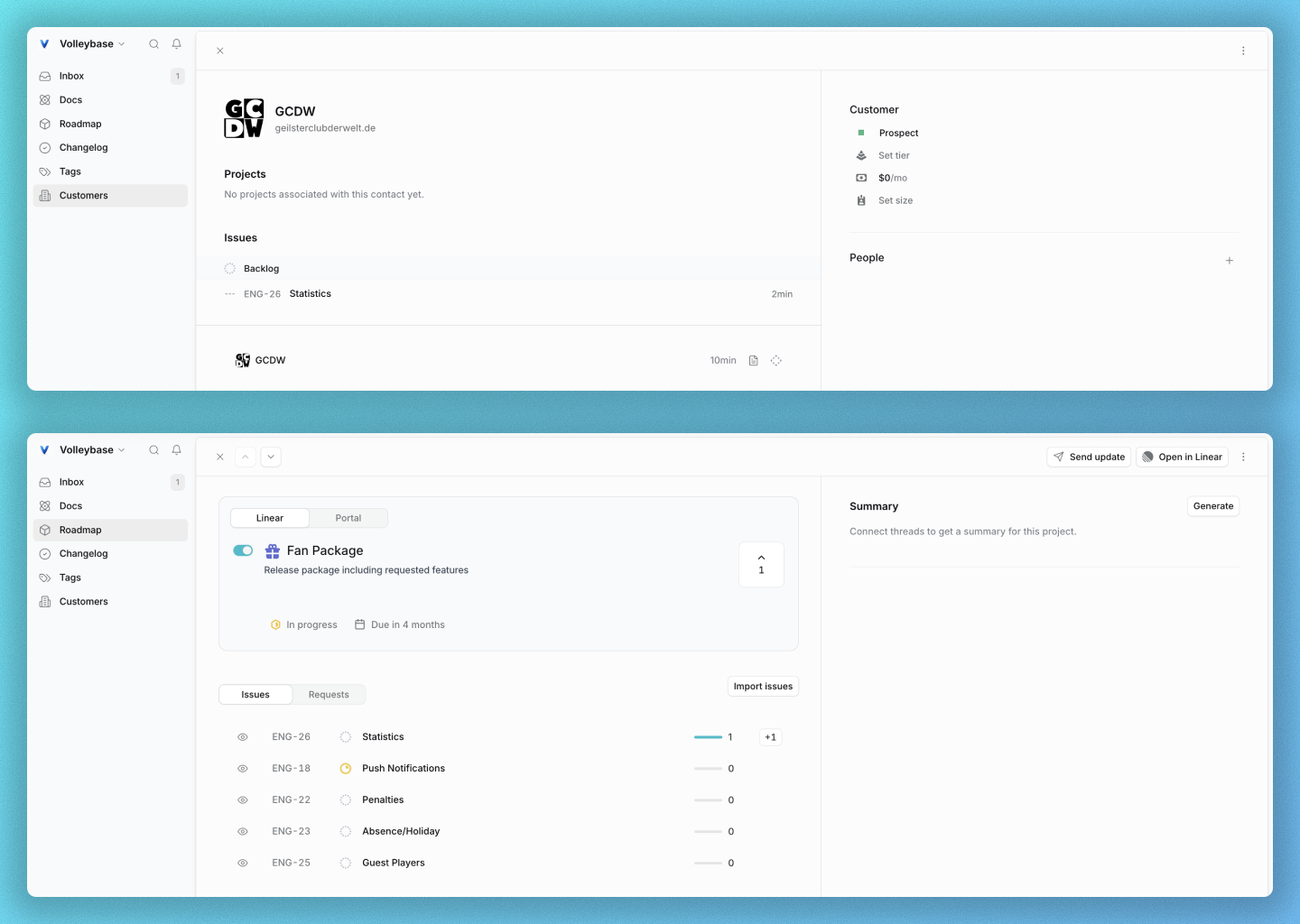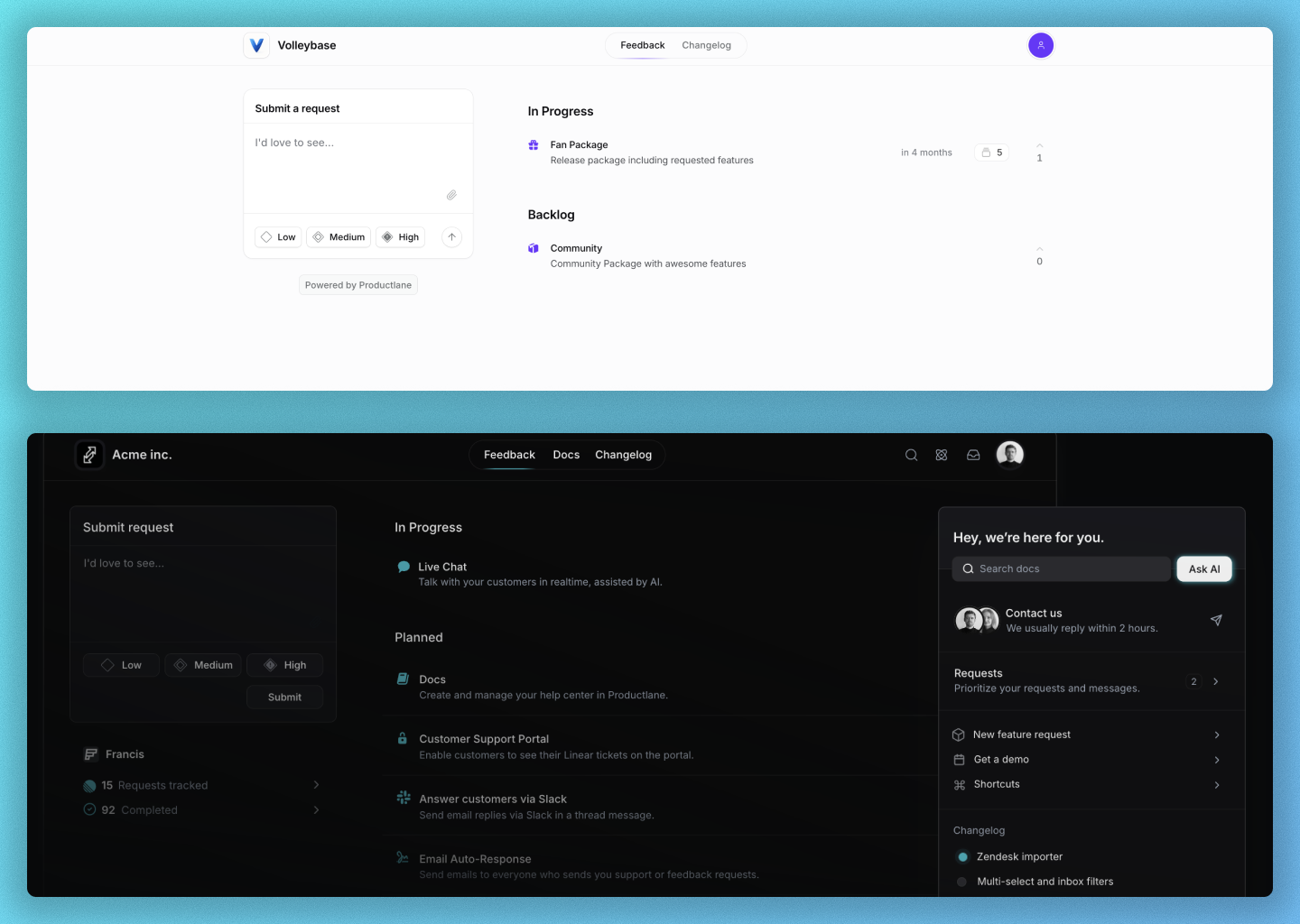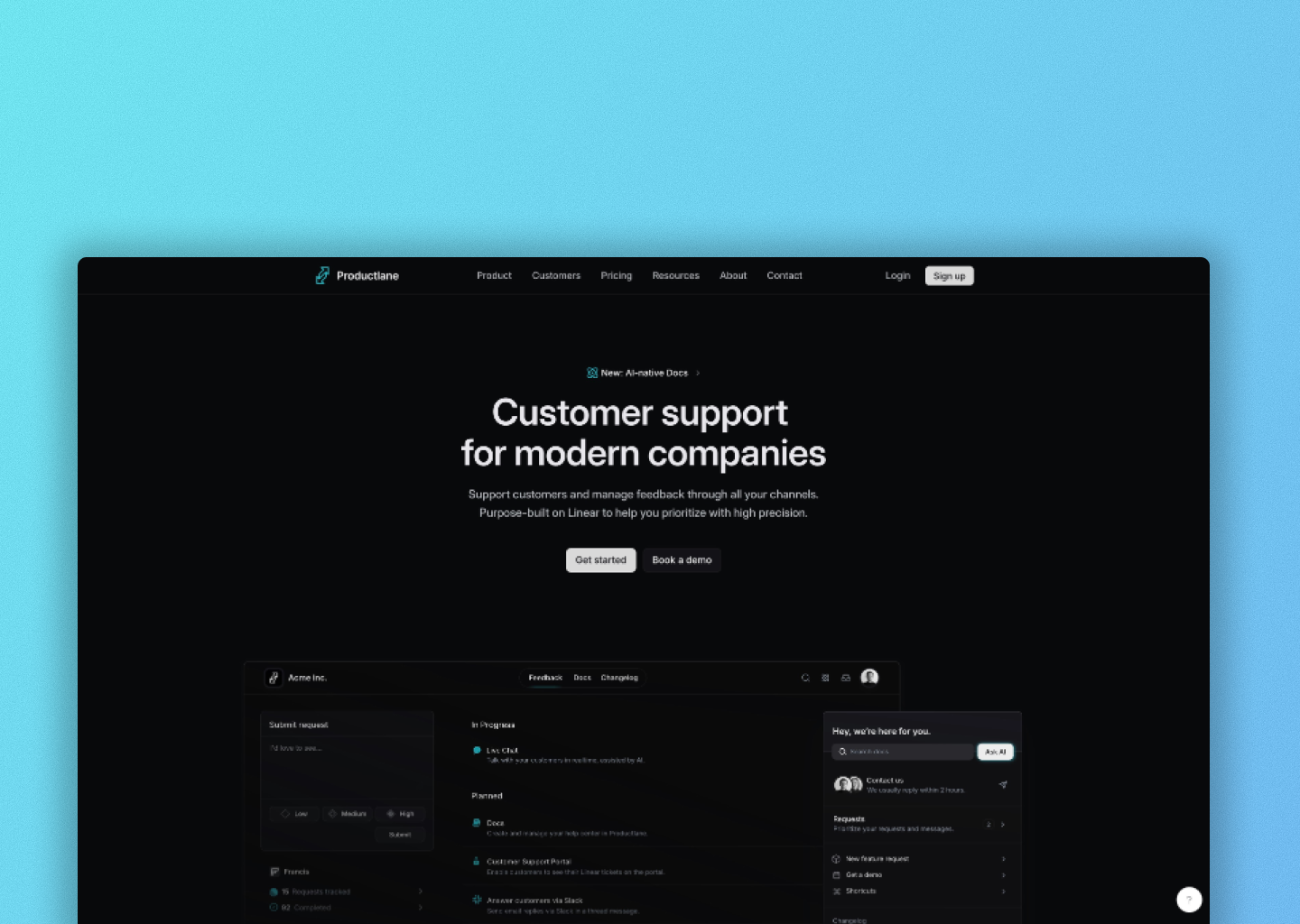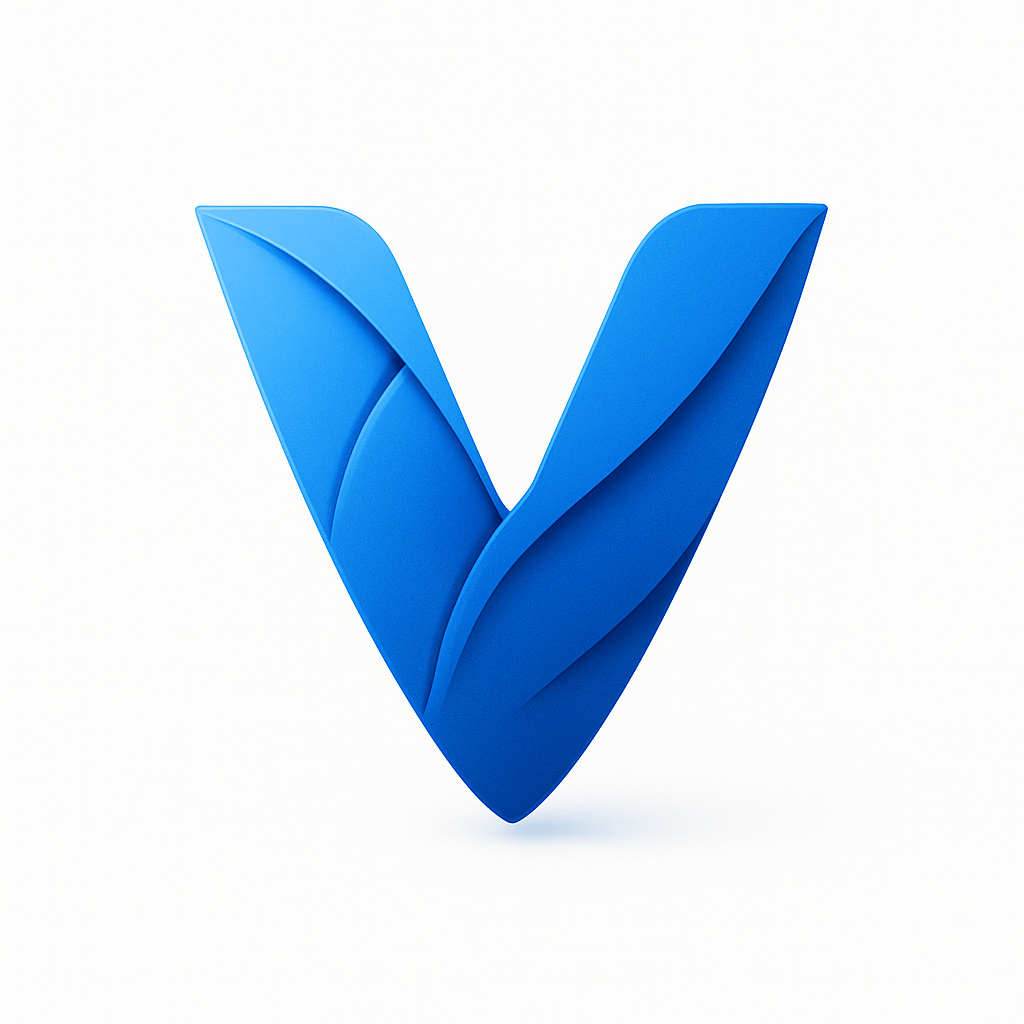Company
Productlane is a customer support and feedback platform specifically built around Linear. It stands out due to its deep integration with Linear, offering a customer support and feedback management tool that ensures no user request is lost. The platform’s lightning-fast sync engine and unified inbox for email, chat, Slack, and more provide exceptional speed and efficiency. With intelligent feedback linking, AI-assist features, and the ability to create branded public roadmaps and changelogs, Productlane enables companies to close the feedback loop with great precision. Designed to be simple, fast, and beautiful, it addresses the issue of fragmented feedback buried across tools.
Work
During my time at Productlane, I worked in a dynamic environment with direct connections to our customers. My daily routine involved collecting feedback, resolving issues, and working on feature requests through various channels including email and Slack. This direct customer engagement gave me valuable insights into user needs and pain points, allowing me to better understand how our product served their workflows.
I was particularly involved in the architectural design of many frontend components. Taking ownership of features from conception to delivery, I integrated solutions across the frontend and backend stacks. Our technical foundation was built on a local-first strategy using Replicache for data synchronisation, tRPC for type-safe API calls, and Inngest webhooks for event-driven processes. This architecture supported our dual focus on customer satisfaction and developer experience.
Working in a small team of five, including three engineers, I was responsible for rapidly shipping features requested by our customers and stakeholders while maintaining high quality standards. I regularly prioritised incremental improvements, balancing short-term wins with long-term architectural decisions. This approach aligned with our company's minimal process philosophy, where I had ownership over decisions typically made by dedicated product and design roles.
Our team embraced natural collaboration and deliberate communication. With our small size, we maintained efficient information flow while ensuring everyone had context on important decisions. I actively participated in fostering this collaborative culture, making sure that ideas and feedback were openly shared and considered.
We consistently invested in tools and abstractions that gave us leverage. I contributed to building reusable components and systems that improved our development velocity, allowing us to deliver more value with less effort. This approach was especially important given our small team size and ambitious product goals.

The image showcases Productlane's user interface displaying customer feedback management functionality. Customers can submit multiple requests through different communication channels such as Slack and email. Each request is clearly organized and linked to Linear, allowing product teams to efficiently track, prioritize, and implement customer feedback. The interface demonstrates how Productlane facilitates the process of gathering customer input, organizing it into actionable items, and integrating it directly with development workflows in Linear. This streamlined approach ensures that important customer needs are properly captured and can be easily incorporated into project planning for investigation and implementation.

The image showcases Productlane's roadmap functionality, which allows companies to publish their future or current projects for users to view and interact with. Users can vote on their favorite topics and features, providing direct feedback on what they'd like to see developed. This creates transparency between product teams and their customers, helping companies prioritize development based on actual user interest.
When Linear released their new customer requests feature, I was responsible for implementing and integrating this functionality into Productlane. This was perfectly timed as it streamlined the process of converting direct customer feedback into actionable tasks. The integration created a lean workflow where customer requests captured in Productlane could be seamlessly transferred to Linear's development tracking system, allowing product teams to quickly act on valuable user input.
This implementation reinforced our vision of enhancing the product development process for all our customers by closing the feedback loop between end-users and development teams. By connecting customer support channels directly to development workflows, we helped teams build products that better addressed their users' actual needs and priorities.
Learning
I gained invaluable insights about product development that significantly shaped my professional approach. I learned the critical importance of shipping features quickly while maintaining thoughtful prioritisation based on real user needs. This balance between speed and impact became central to my development philosophy. It taught me to focus on solving genuine user problems and I discovered that making a meaningful impact often means identifying and addressing the core pain points that affect customers most directly.
The experience reinforced the value of investing in developer experience alongside product quality. Perhaps most importantly, I gained perspective on the challenges of building a startup. Even with a strong customer base and growing revenue, the constant need to innovate and stay ahead of competition creates persistent pressure. Success requires not just good ideas and execution, but the resilience to continuously evolve and improve.
Technically, I expanded my skill set significantly, working with modern technologies. These hard skills have made me a more versatile and effective engineer. In the end rigid processes often matter less than the right mindset. Taking ownership, embracing accountability, and working in an environment that both challenges and supports you creates the conditions for meaningful growth and impact. This lesson about ownership and autonomy has been perhaps the most transformative aspect of my time at Productlane.
Result
During my time at Productlane, I contributed to the company's growth despite it being in its early stages. The platform steadily improved with each iteration, enhancing its functionality and user experience. While facing challenges from competitors in the customer feedback and support space, Productlane continues to carve out its unique position through its specialized Linear integration and focus on speed and simplicity.
I believe the company is finding its distinctive value in the market alongside other players, with its local-first architecture and deep Linear integration providing competitive advantages. The company's future success will depend on maintaining this focus while expanding its feature set to address evolving customer needs in order to grow and establish itself in this competitive landscape.
Demo
Below is a working example of a public roadmap created using Productlane for my Volleybase project. It demonstrates how users can view upcoming features, track development progress, and vote on features they'd like to see implemented.


